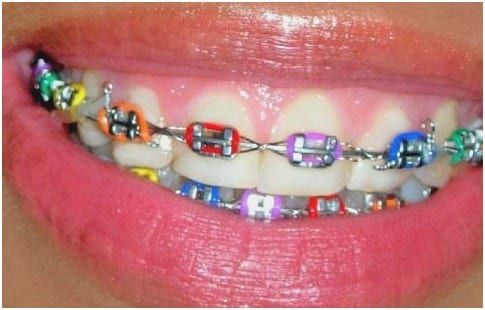When is the Right Time to Get Braces?

The answer to this question is a little different for everyone, but these are some of the most common scenarios we tend to see.
Early Childhood
Baby teeth typically start falling out at age 6 or 7, at which point the alignment of permanent teeth begins to become more clear.
There’s a reason that the American Association of Orthodontists recommends having a child evaluated for braces around age 7 — as crazy as that might seem. This evaluation can help spot issues like overbites, crossbites, and protruding teeth that will only get worse as more of the permanent teeth come in.
This does not mean it’s time to get braces right away, but it can give you a sense of whether braces may be necessary in the future. In some cases, braces or partial teeth aligners may be applied at this stage if a child is having difficulty talking or eating due to poor teeth alignment.
Regardless of a child’s age, if he or she is having trouble eating or talking as a result of their teeth, schedule a visit to your dentist immediately before the problem becomes worse. Your dentist will make a referral to an orthodontist if needed.
Tween and Teen Years
The age most commonly known as the “tween” years are when most children who wear braces begin treatment. Between the ages of 10 and 14, baby teeth are all out and the jaw is strong enough to support braces.
If you look around any middle school in the U.S. today, you are just as likely to see kids with braces as without them. The stigma that used to surround wearing braces a generation ago no longer exists today.
However, it is important to talk with your child about the changes to his or her appearance that will come as a result of wearing braces. Teens and pre-teens should be mature and responsible enough to manage braces on their own with little parental intervention.
The average time for wearing braces at this age is about two years. Once braces come off, a retainer will likely be needed to keep teeth in their correct alignment and prevent additional treatment later on.
Older Options
You can’t turn back the hands of time but you can take steps to ensure that your smile will be straighter and healthier tomorrow than it was today. If you did not have access to an orthodontist as a child or chose not to wear braces earlier in life, the age you are right now is the right time for braces!
Teeth stop growing at the end of adolescence, but they are still very much alive and it is still possible to repair them at any age. More and more adults are realizing the medical and physical benefits of braces and treatment options continue to become less and less invasive.
As an adult, you likely already have an established routine that will need to modified to account for braces. You may need to alter your diet, your morning and evening schedules, or even some of the activities you do.
No matter what changes you need to make, keep in mind that they are short-term sacrifices for long-term gains in confidence and dental health.
Let us Help
At the end of the day, the best way to know when is the right time for braces is to receive a professional evaluation from an orthodontist.


Recent Comments